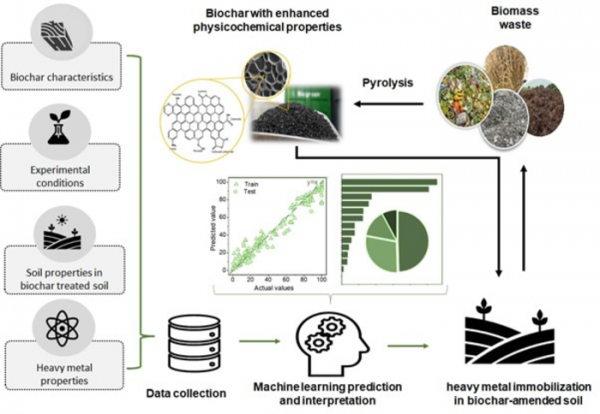Researchers use machine learning modeling to predict the most important factors underlying heavy metal pollution remediation in biochar-treated soils
Biochar, or thermally decomposed biowaste, is an effective way of managing heavy metal (HM) contamination of soils. However, the optimal conditions for achieving maximum HM immobilization with biochar vary widely depending on biochar, soil, and HM properties. An international research team adopted an empirical approach to determining the optimum conditions beforehand using machine learning modeling. Their results can help optimize biochar-based soil remediation efficiency and open doors to a biochar-based green economy.
Environmental pollution is one of the biggest global concerns of our time. Building a sustainable future is only possible if we proactively address every aspect of this problem. In this regard, soil pollution due to the accumulation of heavy metals (HMs) poses a serious threat to sustainable development as well as human health. This is because the HMs that enter the soil eventually find their way up the food chain, and upon entering the human body, can cause life-threatening diseases like cancer, renal failure, and cardiovascular disease. Minimizing HM concentration in soils is, therefore, a key goal in our fight against environmental pollution.
Read more at: Korea University
Biochar is a promising approach to mitigating heavy metal (HM) pollution in soils. However, the optimum conditions for maximum remediation vary with site, biochar, and HM properties. Now, scientists show that machine learning can help predict these optimum conditions beforehand. (Photo Credit: Prof. Yong Sik Ok from Korea University.)


